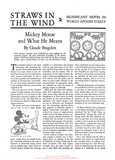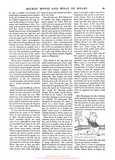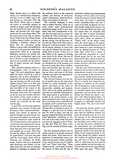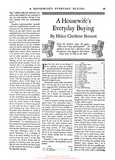



Walt Disney's creations have estahlished an eager audience for the animated cartoon, the most interesting by-product of the motion picture. To Winsor McCay belongs the credit for the first animated picture, and a shadow-theatre in Paris was the forerunner of both.
The animated cartoon is the most interesting and promising byproduct of the motion-picture industry. It is more stricly a new artform than the picturized cinema-drama itself, because – potentially at least – it is a more personal and unconditioned medium of self-expression. Its possibilities, far from being exhausted, except on the technical side have scarcely been explored at all.
The true precursor of the animated cartoon of today antedates the moving picture itself. It is to be found in the shadow-plays presented nightly in the little theatre of the cafe Chat Noir in the Montmartre district of Paris in the eighteen-nineties.
[…]
To Winsor McCay, now a cartoonist on the Hearst newspapers, but best remembered for his "Little Nemo in Slumberland," belongs the credit for having made the first animated picture: In pure line, on a white ground, a plant is seen to grow up and unfold into a flower; a young man turns and plucks it and hands it to a girl. That is all there was of it, but I shall never forget my excitement when I saw it. And no wonder! I was witnessing the birth of a new art.
[…]
In 1920, when [Walt Disney] was employed in a commercial art studio in the Middle West, he used sometimes to work late at night. Toward midnight he often heard scratching against the metal wires of the waste-baskets which held the discarded lunch boxes of the staff. The mice were after their evening meal. From being merely interested Disney became fascinated with the litte creatures. He tamed a number of them and soon had them living together in a cage. One became so friendly that he allowed it on his desk while he worked. So though the actual idea of the Mickey Mouse saga came to him only afterward, while he was travelling on a train between New York and Hollywood, its germ had already been planted in his mind.
Soon after the war, Walt Disney and his brother Roy began making animated cartoons for which Walt provided both the scenarios and the drawings – fifteen hundred for each film. This proved profitable. Bent on expansion, he and a group of his friends produced the first Mickey Mouse cartoons. But the sound-film had arrived meantime, and to make these marketable it was necessary to introduce music and sound-effects. After discouragements and delays an independent company in New York was persuaded to make the sound synchronization, and thereafter the world took Mickey Mouse to its heart. Today Disney controls a big film studio in Hollywood.
[…]